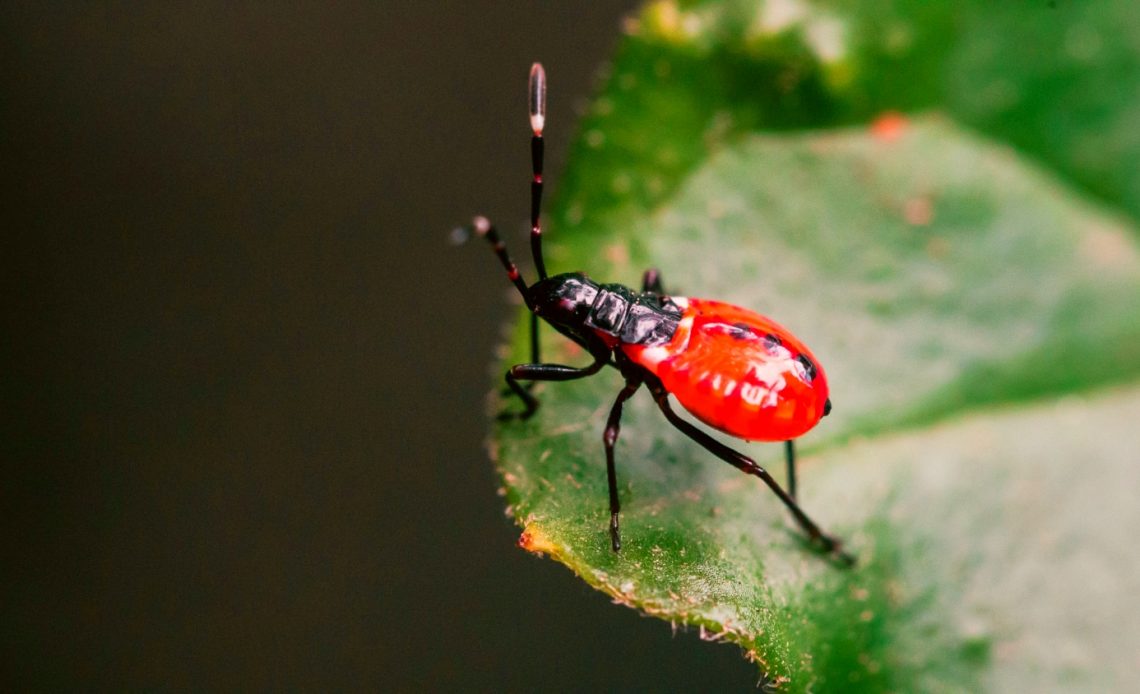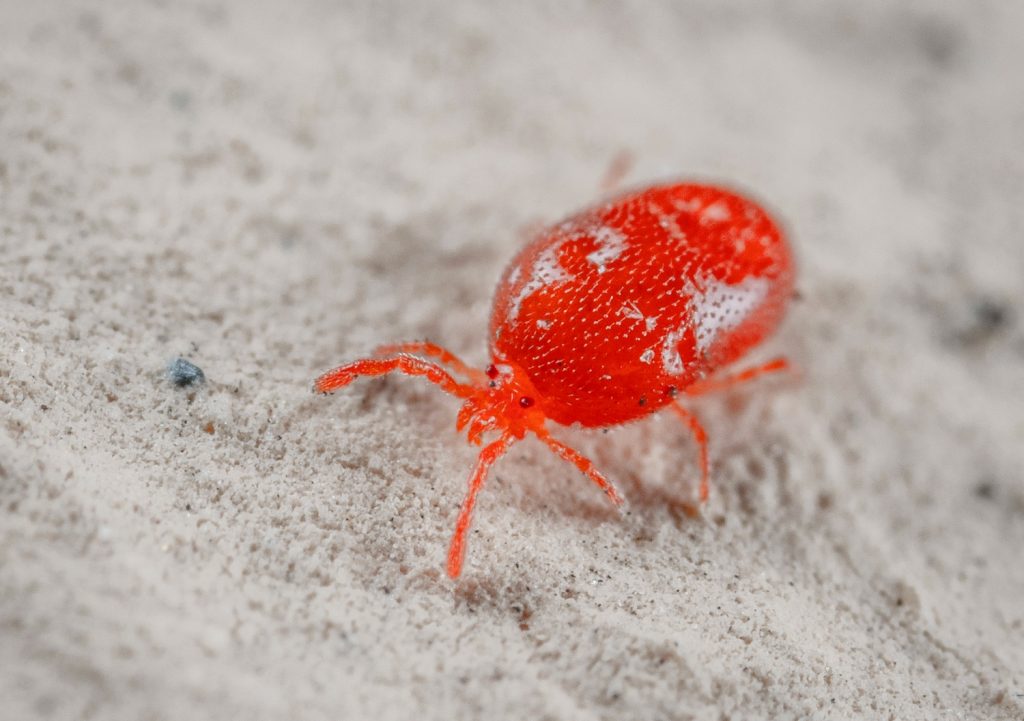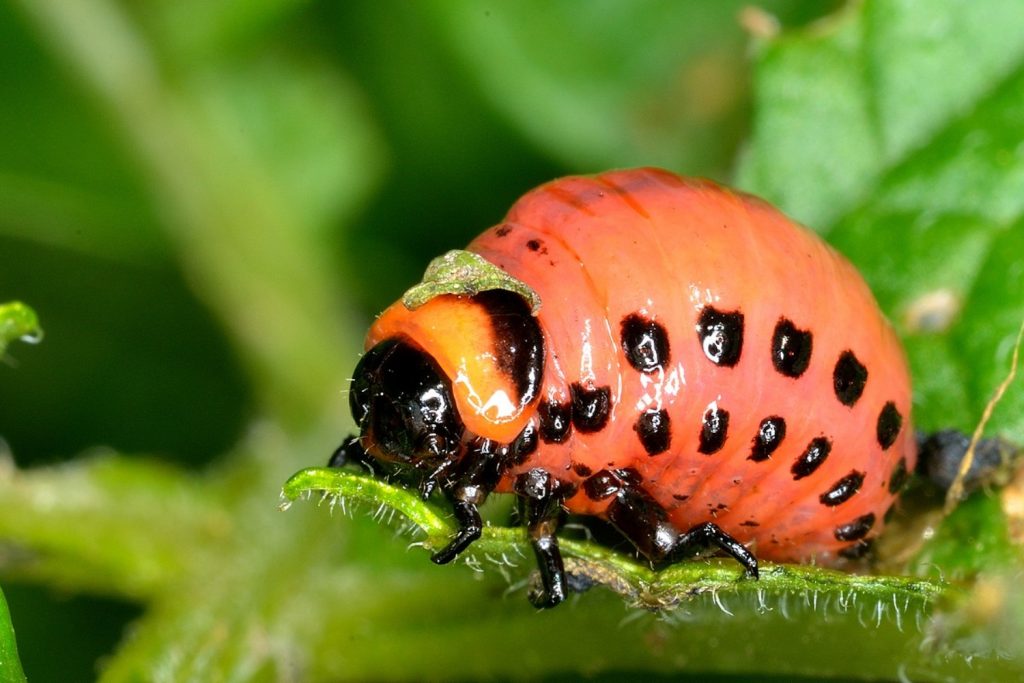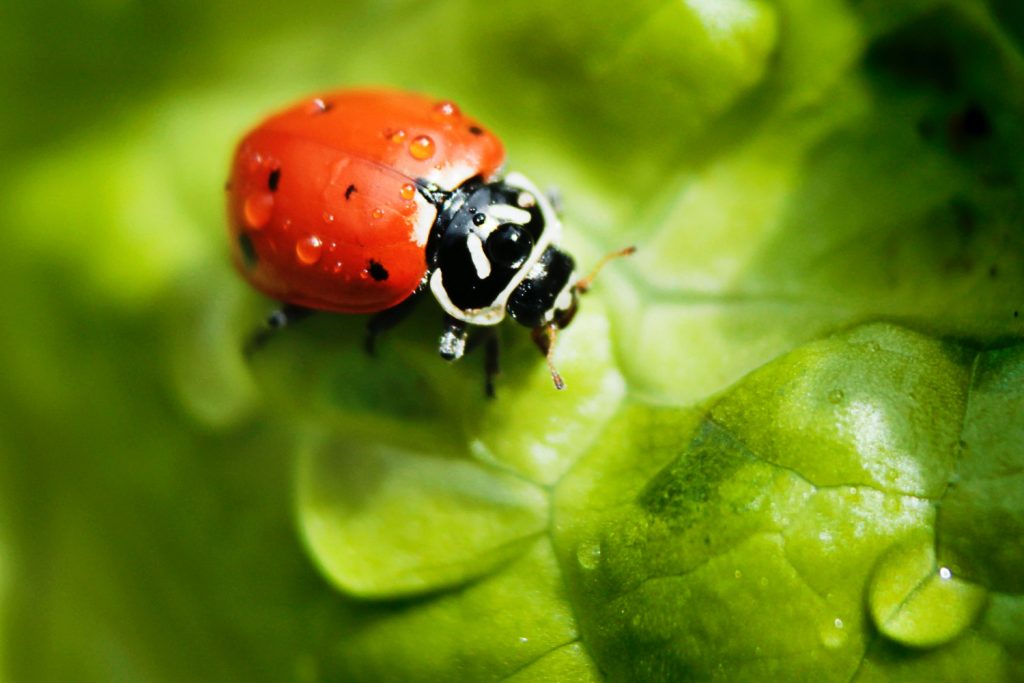

We’re here to help! Wild Yards is a completely free website that is 100% dedicated to helping you create a wildlife-friendly, sustainable yard. Read more
WildYards is reader-supported. When you buy a product through a link on our site, we may earn a comission. Every product is independently selected by our (obsessive) editors and our reviews are unbiased and objective. Read more about our mission or our privacy policy.
Whether you’re a home chef who loves cooking with fresh ingredients or a new gardener looking for something that’s not too hard to grow, tomatoes are the perfect plant for you. These garden favorites are so easy to start from seeds, and they require very little care once they’re out in the garden. Occasionally, however, they can fall prey to insects. If you notice red bugs on tomato plants in your backyard, you may be wondering what they are and how you can get rid of them before they kill your crops.
Those little red insects on your tomatoes are probably aphids or spider mites. These sap-sucking pests parasitize the plants, feeding on their plant food. Treating the plants with natural pesticides and releasing predator insects can help tackle the problem.
How can you tell if your tomato plants are infested with bugs?
To determine whether or not you have red bugs on tomato plants in your garden, be sure to examine the plants closely. Move the foliage gently and check for tiny bright red specks. If the infestation is mild, you may not find the insects themselves. Instead, you may only see signs that they’ve been there.
Over time, insects deplete tomato plants of their nutrients, resulting in yellowing foliage, flower loss, and leaf dieback. Sometimes these pesky bugs feed on the tomato fruits themselves, causing them to fall off before you get a chance to harvest them for yourself. If your tomato plants aren’t performing as well as they should, insects are the likely culprit.

What are those red bugs on your tomato plants?
There are several types of red bugs that like to feed on tomato plants. Knowing the differences between them will help you identify them and treat them appropriately. Use a flashlight and a magnifying glass and take a good look at your tomato plants. Then see if you recognize the following insects.
Aphids (Aphis spp.)
One of the most common garden pests, aphids are small sap-sucking insects that can do significant damage if left untreated. These pesky bugs will prey on just about any plant, including peppers, cucumbers, okra, squash, and bok choy. They also like to feed on fruit trees, especially lemons and apples.
It’s not uncommon to find red aphids on tomato plants. Female aphids can give live birth to nymphs, which may also be pregnant — an adaptation called “telescoping generations”. Unfortunately, this means that aphids can reproduce at an alarming rate.
Aphids thrive in temperate climates, so you’re more likely to see an aphid outbreak in spring or fall when the weather is cooler. Adult aphids will lay eggs over the winter so the infestation can continue.
Aphids are about the size of a pinhead, which makes them difficult to spot unless they congregate. Use a flashlight to shine through individual leaves and look for moving shadows. You may also notice ants on your tomatoes. Aphids create a sugary substance called “honeydew” that ants just love, so it’s not unusual to see both of these insects invading your tomatoes at the same time.
Spider mites (Tetranychus urticae)
Even though spider mites are just as tiny as aphids, spider mite infestations are usually easier to identify. That’s because spider mites create webs on the undersides of leaves and between leaves and stems. They use these webs to protect themselves from predators, and if the infestation is severe enough, your tomato plants may be covered in them.
Spider mites are usually bright red, but they can also be found in other colors, including brown, yellow, orange, and green. Female spider mites can lay eggs at just 5 days old, and they can lay up to 20 eggs a day. Because they can reproduce so rapidly, spider mites are able to adapt quickly to most pesticides.
Because spider mites and aphids are roughly the same size, it can be difficult to distinguish between the two. Unlike aphids, spider mites prefer hot, dry weather. So you’re much more likely to see a spider mite infestation in the late summer months.

Leaf-footed bug nymphs (Acanthocephala spp.)
Adult leaf-footed bugs could never be confused for aphids or spider mites since they’re not red and they certainly aren’t little. These large sap-sucking insects are black, brown, and dark gray in color with long antennae, large back legs, and wings. But the nymphs of this species are small and red, and they like to crawl around tomato plants.
Leaf-footed bug nymphs are pretty scary looking. Their bodies are bright yellow, orange, or red, and they have long, black legs that jut out at odd angles. They can be unnerving, but if the population is small enough, they won’t do much harm. Leaf-footed bug nymphs have tiny pincers, which they use to pierce tomatoes. Usually, they eat their fill leaving only a tiny yellow spot behind on the fruit.
Leaf-footed bug nymphs are easy to find. They measure around ⅛ to ¼ inch in length, and they tend to travel in groups, which also makes them easier to spot. If you notice a lot of leaf-footed nymphs, or if you find half-eaten, rotting fruits on the ground in your garden, you’ll need to take measures to bring the population back down.
Colorado potato beetle nymphs (Leptinotarsa decemlineata)
Colorado potato beetles are small orange and black striped beetles that measure around ¼ to ⅜ inch in length. Although they prefer to invade potato crops, in the absence of potatoes, they’ll happily infest other nightshades, including peppers, eggplants, and, of course, tomatoes.
Adult Colorado potato beetles aren’t red, but their nymphs are. Nymphs hatch from bright yellow eggs situated on the undersides of leaves. New larvae are black and brown, but turn red as they grow. Just before pupation, the Colorado potato beetle nymphs change shape, becoming elongated and turning more orange than red.
Since Colorado potato beetle nymphs are somewhat rounded, it’s easy to confuse them for ladybugs. Be sure to double-check to make sure you know which type of bug is setting up shop on your tomato plants. If you do have a Colorado potato beetle infestation, you’ll need to act fast to nip it in the bud.

4 Ways to get rid of red bugs on tomato plants
If your tomato plants are playing host to dozens of red bugs, there are things you can do to help. Here are 4 ways to get rid of those bothersome insects before they do any more damage to your tomato crops.
Hose the plants off
The best way to get rid of insects is to physically remove them. If you only have a few bugs hiding in between your tomato plant’s foliage, then you can pick them off by hand using a pair of tweezers. But if the plants are covered with insects, hosing them down can help.
Use a garden hose sprayer on a jet setting to force the bugs off of the leaves. Be sure to hose down the undersides of the leaves as well as the tops, and spray in the crevices of the stems, too. Gently rub the leaves in between your fingers to help break up any larvae or eggs that may be hiding there.
Since leaving water sitting on your plant’s foliage overnight can lead to powdery mildew, we recommend only hosing your tomatoes down in the morning. This way, the excess water has plenty of time to evaporate before the sun goes down.

Apply a natural insecticide
After you’ve hosed off your tomato plants, apply the insecticide of your choice. Since harsh chemical pesticides can have devastating effects on local bee populations, we strongly recommend using homemade insect repellants with milder ingredients. Natural insecticides won’t harm pollinators or your plants. But they will kill the eggs, larvae, and adult morphs of damaging insect species.

Consider companion planting
Tomato companion plants like basil and chives help repel red bugs naturally. The insects hate the strong smell of these easy-growing herbs. Meanwhile, flowers like nasturtiums can be used as trap crops. By planting these flowers near your tomatoes, you can divert the red bugs’ attention away from your vegetables and give them something else to snack on instead.
Release predator insects
Whether you’re trying to pull the brakes on a serious insect infestation or just trying to prevent one from happening, releasing predator insects is a smart move. Ladybugs, lacewings, and parasitic wasps will happily scour your garden for damaging insects and get rid of them so you don’t have to. For best results, release predator insects in your garden at least once a year — once in the spring, to help guard your seedlings, and again in midsummer to guard your fruits and veggies while they grow.

More tips for keeping your tomato plants healthy
Ultimately, the best way to keep your tomato plants bug-free is by keeping them as healthy as possible. And you can do that by meeting all of the plant’s growing requirements. Plant your tomatoes in loose, sandy loam soil with a slightly acidic pH of 6.0 to 6.5. Make sure they get at least 6 hours of sunlight every day, and give them an inch of water per week to keep the soil moist, but not sopping wet.
By helping your tomatoes get started on the right foot, and by addressing any insect infestations quickly, you can keep them healthy so you get plenty of tomatoes to enjoy at the end of the growing season.
